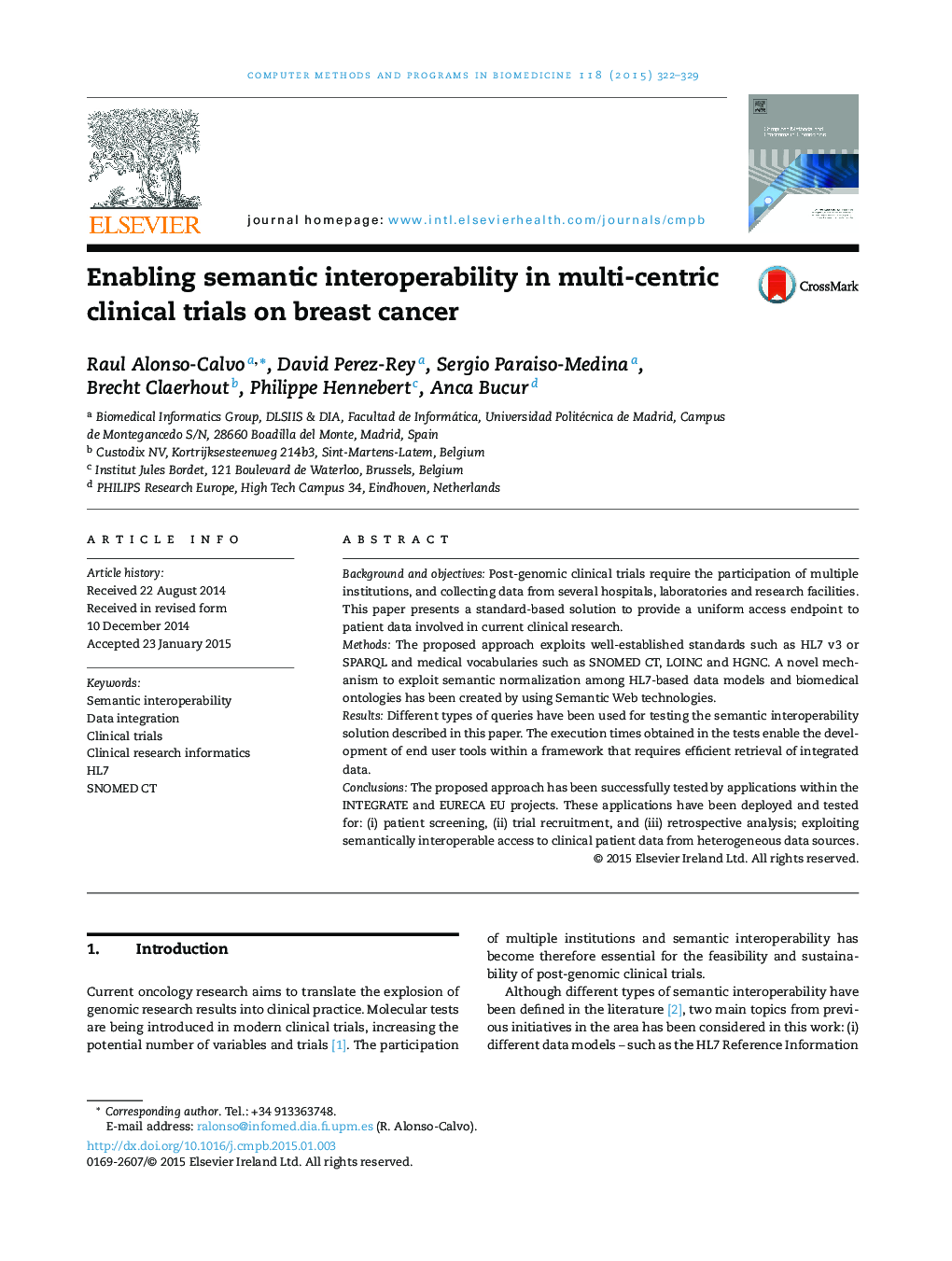| Article ID | Journal | Published Year | Pages | File Type |
|---|---|---|---|---|
| 467642 | Computer Methods and Programs in Biomedicine | 2015 | 8 Pages |
•We present a standard-based semantic interoperability solution.•This solution uses a mechanism that exploits semantic normalization over HL7 model.•It has been used for testing in trial recruitment or trial feasibility.•Execution times obtained in testing empower its utilization for end user tools.
Background and objectivesPost-genomic clinical trials require the participation of multiple institutions, and collecting data from several hospitals, laboratories and research facilities. This paper presents a standard-based solution to provide a uniform access endpoint to patient data involved in current clinical research.MethodsThe proposed approach exploits well-established standards such as HL7 v3 or SPARQL and medical vocabularies such as SNOMED CT, LOINC and HGNC. A novel mechanism to exploit semantic normalization among HL7-based data models and biomedical ontologies has been created by using Semantic Web technologies.ResultsDifferent types of queries have been used for testing the semantic interoperability solution described in this paper. The execution times obtained in the tests enable the development of end user tools within a framework that requires efficient retrieval of integrated data.ConclusionsThe proposed approach has been successfully tested by applications within the INTEGRATE and EURECA EU projects. These applications have been deployed and tested for: (i) patient screening, (ii) trial recruitment, and (iii) retrospective analysis; exploiting semantically interoperable access to clinical patient data from heterogeneous data sources.
